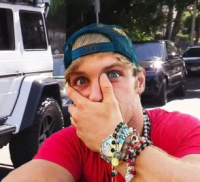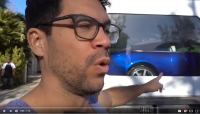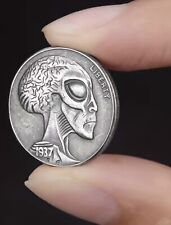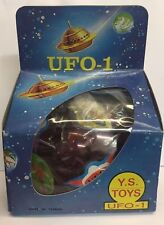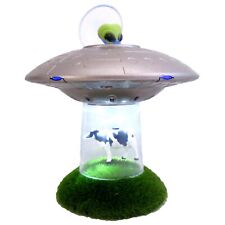 On eBay Now...
On eBay Now...UFO - GABRIELLE DRAKE - Lt Gay Ellis - PERSONALLY SIGNED AUTOGRAPH CARD 2020 GD1 For Sale
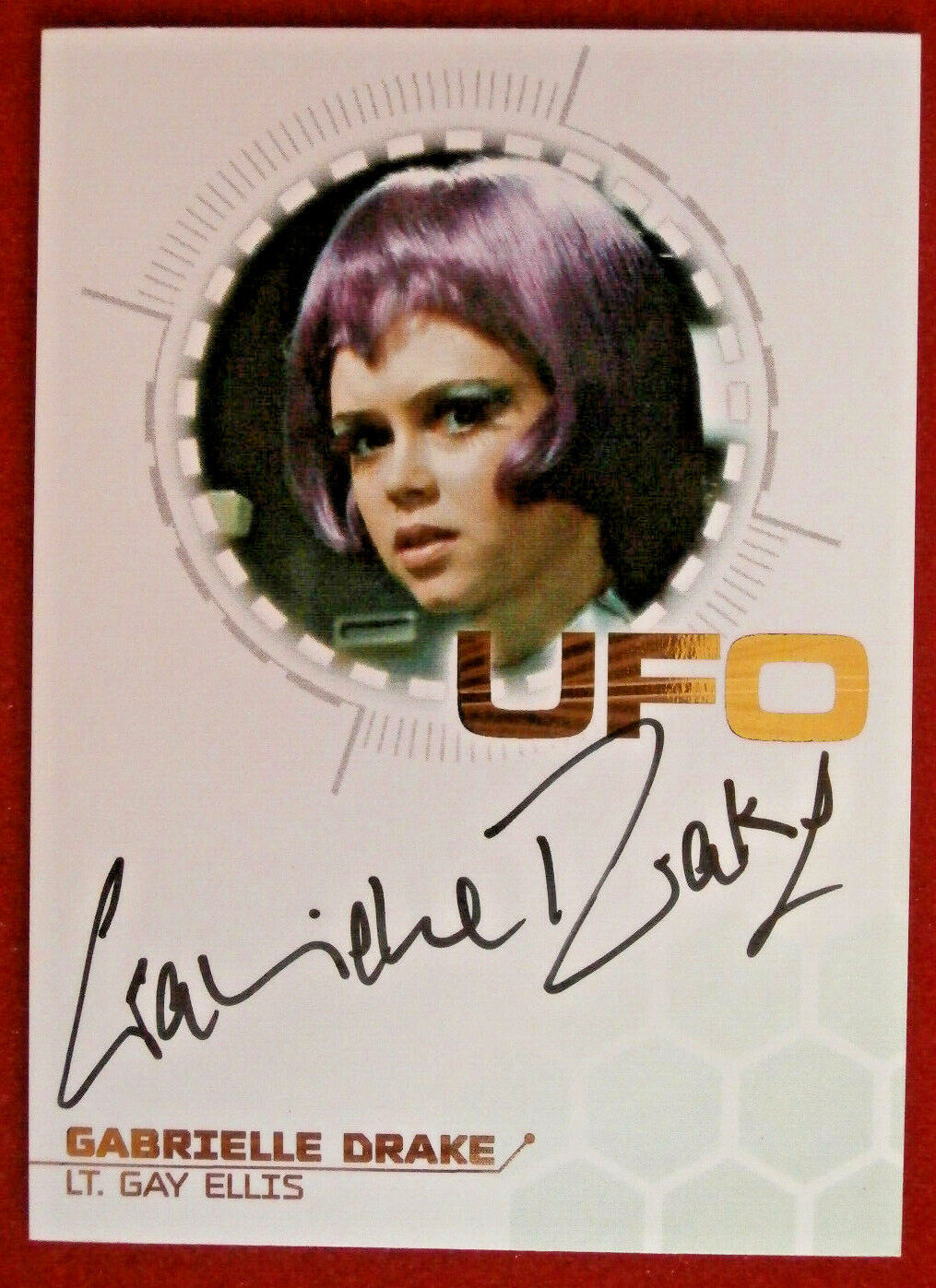
When you click on links to various merchants on this site and make a purchase, this can result in this site earning a commission. Affiliate programs and affiliations include, but are not limited to, the eBay Partner Network.
UFO - GABRIELLE DRAKE - Lt Gay Ellis - PERSONALLY SIGNED AUTOGRAPH CARD 2020 GD1:
$60.94
UFO - GABRIELLE DRAKE as Lt Gay Ellis - PERSONALLY SIGNED Limited Edition AUTOGRAPH CARD - Unstoppable 2020.Her brother was the musician Nick Drake, whose work she hasconsistently helped to promote since his death in 1974.
EarlylifeDrake was born in Lahore, British India, the daughter ofRodney Drake and amateur songwriter Molly Drake. Her father was an engineerworking for the Bombay Burmah Trading Corporation. The family moved from Burmato Britain when she was eight. She later commented that,
Until then, life was fairly easy out east. There were lots ofservants ... not that I remember having a spoilt childhood. Then suddenly wewere back in England and in the grips of rationing. And yet, we were lucky in away. We came back with my nanny who knew far more about England than mummy did.I remember the two of them standing over the Aga with a recipe book trying towork out how to roast beef, that sort of thing!
On the ship travelling to Britain she appeared in children\'stheatrical productions, later saying of herself \"I was a dreadfulexhibitionist.\" She attended Edgbaston College for Girls in Birmingham,Wycombe Abbey School, Buckinghamshire and the Royal Academy of Dramatic Art(RADA) in London. She has had a long stage career beginning in the mid-1960s,and has regularly appeared in television dramas.
Screen careerDrake first gained wide attention for her portrayal ofLieutenant Gay Ellis in the 1970 science fiction television series UFO, in which her costume consisted of asilver suit and a purple wig. In the series, the character of Lt. Gay Ellis isthe commander of the SHADO Moonbase, which is Earth\'s first line of defenceagainst invading flying saucers. Drake appeared in roughly half the 26 episodesproduced, leaving the series during a break in the production to pursue otheracting opportunities.
In 1971, Drake appeared in a short film entitled Crash!, based on a chapter in J. G.Ballard\'s book The Atrocity Exhibition.The film, directed by Harley Cokeliss, featured Ballard talking about the ideasin his book. Drake appeared as a passenger and car-crash victim. Ballard laterdeveloped the idea into his 1973 novel Crash.In his draft of the novel he mentioned Drake by name, but references to herwere removed from the published version. In the 2009 BBC documentary Synth Britannia clips of Ballard andDrake from Crash! were inserted intothe 1979 video for Gary Numan\'s song \"Cars\". A reviewer in The Scotsman commented that the presenceof Drake \"brought serious glamour to urban alienation\".
In the early 1970s, Drake was associated with the boom inBritish sexploitation movies, repeatedly appearing nude or topless. She playeda nude artist\'s model in the 1970 film ConnectingRooms, and was one of Peter Sellers\' conquests in the film There\'s a Girl in My Soup. She alsoplayed one of the lead roles in the sex comedy Au Pair Girls (1972) and appeared in two Derek Ford films, Suburban Wives (1971) and its sequel Commuter Husbands (1972), in which sheplayed the narrator who links the disparate episodes together.
Her early television appearances include The Avengers (1967), CoronationStreet (as Inga Olsen in 1967) and TheSaint (1968). In 1970, she auditioned for the part of Jo Grant in Doctor Who, reaching the final shortlistof three, but did not get the part.
She gained wide exposure in The Brothers, the hit BBC family drama series, in which sheappeared as a regular for the first four seasons playing Jill, the girlfriend(and later wife) of David Hammond. She also appeared in an episode of BrianClemens\' 1970s series Thriller, in The Kelly Monteith Show (as Monteith\'swife 1979–80), a television version of TheImportance of Being Earnest (1985, for LWT/PBS), Crossroads (1985–87, as motel boss Nicola Freeman) and returned to Coronation Street in 2009 as Vanessa. InThe Inspector Lynley Mysteries(2003–05) she played the protagonist\'s mother.
Stage careerDrake made her stage debut in 1964, during the inauguralseason of the Everyman Theatre, Liverpool, playing Cecily in The Importance of Being Earnest. In1966, she joined the Birmingham Repertory Company and played Queen Isabella inMarlowe\'s Edward II. She also hadroles in Private Lives (with ReneeAsherson), The Simpleton of theUnexpected Isles (with Linda Marlowe and Patrick Mower), Twelfth Night and Inadmissible Evidence. The following year, she was Roxanne in Cyrano de Bergerac at the Open AirTheatre, Regent\'s Park. In the 1974-5, season at the Bristol Old Vic, sheplayed in Cowardy Custard, a devisedentertainment featuring the words and music of Noël Coward. In 1975, sheappeared as Madeline Bassett in the original London cast of the Andrew LloydWebber and Alan Ayckbourn musical Jeeves.She also appeared in French Without Tearsat the Little Theatre, Bristol. In 1978, she played Lavinia, opposite Simon Callowin the title role, in Shakespeare\'s TitusAndronicus, directed by Adrian Noble, at the New Vic, Bristol. She alsoappeared at the Bristol Old Vic in that year, in Vanbrugh\'s The Provok\'d Wife.
She was directed by Mike Ockrent in Look, No Hans!, alongside David Jason, during the 83-84 season atthe Theatre Royal, Bath. She made a second appearance in The Importance of Being Earnest at the Royalty Theatre, London, ina production directed by Donald Sinden, which also starred Wendy Hiller, CliveFrancis, Phyllida Law and Denis Lawson (87-88). In 1988, she played FionaFoster in a revival of Ayckbourn\'s Howthe Other Half Loves, first at the Greenwich Theatre, then at the Duke ofYork\'s Theatre. During the 1990-91 season at the Theatre Royal, Bath, she playedin Risky Kisses with Ian Lavender.She was in the Mobil Touring Theatre\'s official centenary production of Charley\'s Aunt in 1991, with FrankWindsor, Patrick Cargill and Mark Curry. In 1993, she was Monica in Coward\'s Present Laughter at the Globe Theatre,London, in a revival directed by and starring Tom Conti. She co-starred withJeremy Clyde in the 1995 King\'s Head Theatre tour of Cavalcade, directed by Dan Crawford. In 1999, she was Vittoria inPaul Kerryson\'s production of The WhiteDevil at the Haymarket Theatre, Leicester. She also toured with the OxfordStage Company in that year, as Hester Bellboys in John Whiting\'s A Penny for a Song, alongside JulianGlover, Jeremy Clyde, and Charles Kay. She played Mrs Malaprop in the 2002touring production of The Rivals withthe British Actors\' Theatre Company, whose artistic director, Kate O\'Mara, wasDrake\'s co-star in the TV series TheBrothers.
She has made regular appearances at the Royal ExchangeTheatre, Manchester, since her debut there in a non-pantomime version of Cinderella, written by Trevor Peacock,in 1979. That same year, she co-starred with Sorcha Cusack and Susan Penhaligonin Caspar Wrede\'s production of TheCherry Orchard. In 1986, she was Madame Gobette in the British premiere ofMaurice Hennequin\'s Court in the Act,which subsequently played at the Yvonne Arnaud Theatre, Guildford, and theTheatre Royal, Bath, before transferring to the Phoenix Theatre in London(1987). Other roles at the Royal Exchange include Mrs Erlynne in Lady Windermere\'s Fan (1996); Anna in The Ghost Train Tattoo (2000); Fay in Loot (2001); Lady Bracknell in The Importance of Being Earnest (2004);and The Comtesse de la Briere in WhatEvery Woman Knows (2006). At the same theatre in 2001, Drake replacedPatricia Routledge as Mrs Conway during the rehearsal period for J. B.Priestley\'s Time and the Conways,when Routledge was forced to withdraw from the production due to illness.
Elsewhere, she has appeared in her one-woman show, Dear Scheherazade, as the 19th centurywriter Elizabeth Gaskell (2005, 2007, 2010). At the Chipping Campden LiteratureFestival in 2011, she and Martin Jarvis read extracts from the letters anddiaries of Robert and Clara Schumann in the recital, Beloved Clara. She had appeared in the same piece the previousyear, again with Jarvis and the pianist Lucy Parham, at the Wigmore Hall inLondon.
FamilyDrake has helped to ensure the public renown of her brotherNick Drake and her mother Molly Drake. She can be heard accompanying herbrother Nick on a number of songs that he recorded privately, and which havesince been released on the album FamilyTree. After the release of songs written and performed by her mother, shesaid \"Her creativity was a personal thing, and she was lucky to be able todevelop it in an environment where that side of her was totally accepted.Indeed, my father encouraged it. He was so proud of her. On one occasion, heeven made the 20 mile drive to Birmingham to get four songs pressed onto adisc.\" In 2014 she published NickDrake: Remembered for a While, a memoir of her brother. In April 2018,Gabrielle collected the Hall of Fame Folk Award 2018 on her brother\'s behalf inBelfast.
She lives in Wenlock Abbey in Much Wenlock, Shropshire in ahouse she bought in 1983 with her husband South African-born artist Louis deWet, who died in 2018. They renovated their home over several years as anartistic project and in 2004 he described it as \"the most beautifulbuilding site in the world\". Drake was the producer of In the Gaze of the Medusa, a 2013 filmby Gavin Bush about the renovation project and her husband\'s designs for thehouse.
Selected filmography• The Man Outside(1967)
• Crossplot(1969)
• Connecting Rooms (1970)
• There\'s a Girl in My Soup (1970)
• Suburban Wives(1971)
• Commuter Husbands (1972)
• Au Pair Girls(1972)
• All About a Prima Ballerina (1980)
• The Steal(1995)
Television roles• Riviera Police(one episode, 1965)
• The Avengers(one episode, \"The Hidden Tiger\", produced in January 1967)
• The Champions(one episode, \"Full Circle\",1969)
• UFO (1969–70)
• Special Branch (TV Series S2 E10 1 episode) (1970)
• Man at the Top(one episode, \"Join the Human Race\", 1970)
• The Brothers(1972–74)
• Thriller (one episode, \"Kill Two Birds\" 1976)
• The New Avengers (one episode, \"Dead Men Are Dangerous\", 1977)
• The Professionals (1978)
• The Kelly Monteith Show (1979–80)
• Never the Twain(1981)
• Number 10 (oneepisode, 1983)
• Crossroads(1985–87)
• The Inspector Lynley Mysteries (2003–05)
• Doctors (2011)
UFOis a 1970 British television science fiction series about an alieninvasion of Earth, created by Gerry Anderson and Sylvia Anderson withReg Hill, and produced by the Andersons and Lew Grade\'s Century 21Productions for Grade\'s ITC Entertainment company.UFOwas first broadcast in the UK and Canada in 1970 and in USsyndication over the next two years. In all, 26 episodes, includingthe pilot, were filmed over the course of more than a year, with afive-month production break caused by the closure of the MGM-BritishStudios in Borehamwood, where the show was initially made.
TheAndersons had previously made a number of very successful children\'sscience fiction series using marionettes, including Supercar,Fireball XL5, Stingray, Thunderbirds, Captain Scarlet and theMysterons and Joe 90. They had also made one live-action sciencefiction movie, Doppelgänger, also known as Journey to the Far Sideof the Sun, and now felt ready to move into live-action televisionand aim at a more adult market. UFO was theAndersons\' first totally live-action TV series. Despite theassumption of many TV station executives, the series was not aimed atchildren but was intended for an older audience; many episodesfeatured adult themes such as adultery, divorce, and drug use. Mostof the cast were newcomers to Century 21 although star Ed Bishop hadpreviously worked with the Andersons as a voice actor on CaptainScarlet and The Mysterons. The show\'s basic premiseis that in 1980 (a date indicated in the opening credits), Earth isbeing visited and attacked by aliens from a dying planet and humansare being covertly harvested for their organs by the aliens. Theshow\'s main cast of characters are members of a secret,high-technology international agency called SHADO (an acronym forSupreme Headquarters, Alien Defence Organisation) established todefend Earth and humanity against the mysterious aliens and learnmore about them, while at the same time keeping the threat of analien invasion hidden from the public. UFOs: Theextraterrestrial spacecraft can readily cross the vast distancesbetween their planet and Earth at many times the speed of light(abbreviated and pronounced as \"SOL\"; e.g., \"SOL onedecimal seven\" is 1.7 times the speed of light), but are toosmall to carry more than a few crew members. Their time on station islimited: UFOs can only survive for a couple of days in Earth\'satmosphere before they deteriorate and finally explode. The UFOs cansurvive for far longer underwater; one episode, \"Reflections inthe Water\", deals with the discovery of a secret undersea alienbase, which shows one UFO flying straight out of an extinct volcano,which Straker describes as \"a back door to the Atlantic\". Aspecial underwater version of the standard UFO design is seen in \"SubSmash\". In flight they are surrounded by horizontally spinningvanes and emit a distinctive pulsing electronic whine that soundslike a Shoooe-Wheeeh! (produced by series composer Barry Gray on anondes Martenot). The craft is armed with a laser-type weapon, andconventional explosive warheads can destroy it. The personal arms ofthe aliens resemble shiny metal submachine guns; these have a lowerrate of fire than those used by SHADO. Later episodes such as \"TheCat with Ten Lives\" show the aliens using other weapons, such asa small device that paralyses victims. Aliens:Notably for science fiction, the alien race isnever given a proper name, either by themselves or by human beings;they are simply referred to as \"the aliens\". They arehumanoid in appearance, and the autopsy of the first alien capturedreveals that they are harvesting organs from the bodies of abductedhumans to prolong their lifespans. However, the later episode \"TheCat with Ten Lives\" suggests that these \"humanoids\"are actually beings subject to alien mind control, and one \"alien\"body recovered was suspected of being completely homo sapiens,\"possessed\" by one of the alien minds. Their faces arestained green by the hue of a green oxygenated liquid, which isbelieved to cushion their lungs against the extreme acceleration ofinterstellar flight; this liquid is contained in their helmets. Toprotect their eyes the aliens wear opaque sclera contact lenses withsmall pinholes for vision. The show\'s opening sequence begins byshowing the image of one of these contact lenses being removed froman obviously real eye with a small suction cup, even though the lensis not shown in contact with the eye. The entire lens-removalsequence is shown in the pilot episode. Only two ofthe alien suits were made, so at no point in the series are more thantwo of the aliens seen on screen at any one time. In the episode\"Ordeal\", Paul Foster is carried by two aliens while he iswearing an alien space suit, but one of those two aliens is alwaysoff-screen when Foster is on-screen. The alienspacesuit costumes were made of red spandex. At the start ofproduction the alien spacesuits were ornamented with brass chainmesh, as seen in the episode \"Survival\". Later this wasreplaced by silvery panels as in the image. In reality, the darkvertical bands on the sides of the helmets were slits meant to allowthe actors to breathe. SHADO: Todefend against the aliens, a secret organisation called SHADO, theSupreme Headquarters, Alien Defence Organisation, is established.Operating under the cover (as well as under the premises) of theHarlington-Straker Studios movie studio in England, SHADO is headedby Commander Edward Straker (Ed Bishop), a former United States AirForce colonel and astronaut, who poses as the studio\'s chiefexecutive. Establishing the main character as astudio executive was a cost-saving move by the producers: the studiowas the actual studio where the series was being filmed, originallythe MGM-British Studios and later Pinewood Studios – although theHarlington-Straker studio office block seen throughout the series wasactually Neptune House, a building at the former British NationalStudios in Borehamwood that was owned by ATV. Pinewood\'s studiobuildings and streetscapes were used extensively in later episodes,particularly \"Timelash\" and \"Mindbender\", thelatter featuring scenes that showed the behind-the-scenes workings ofthe UFO sets when Straker briefly finds himself hallucinating that heis an actor on a TV series and all his SHADO colleagues are likewiseactors. In \"The Man Who Came Back\", the main set for TheDevils, then in production at Pinewood, can be seen in the backgroundof several scenes. Typical of Anderson productions,the studio-as-cover idea was both practical and cost-effective forthe production and provided a ready-made vehicle for the viewer\'ssuspension of disbelief. It removed the need to build an expensiveexterior set for the SHADO base and combined the all-important\"secret\" cover (concealment and secrecy are always centralthemes in Anderson dramas) with the trademark ring of at leastnominal plausibility. A studio was a business where unusual eventsand routines would not be remarkable or even noticed. Comings andgoings at odd times, the movement of vehicles, equipment, people andmaterial would not create undue interest and could easily beexplained away as sets, props, or extras. AnotherAnderson leitmotif was the concept of the mechanical conveyor, e.g.the automatic boarding tubes of the Stingray and the Thunderbirdcraft. In UFO, this appeared in the guise of Straker\'s \"secret\"office, which doubled as a lift (elevator) that takes him down to theSHADO control centre located beneath the studio. The pilots of thespace interceptors and the submersible \"Sky One\" jetinterceptor slide down boarding chutes into their craft. Theinterceptors then rise from their hangar via elevating platforms to alaunch pad disguised as a lunar crater. This was a carry-over fromthe earlier marionette series where it was used due to the difficultyin getting puppets to walk and get them into cockpits. SHADOequipment: SHADO has a variety of high-techhardware and vehicles at its disposal to implement a layered defenceof Earth. Early warnings of alien attack would come from SID, theSpace Intruder Detector, a computerised tracking satellite thatconstantly scans for UFO incursions. The forward line of defence isMoonbase from which the three Lunar Interceptor spacecraft, carryingnuclear missiles, are launched. The second line of defence includesSkydiver, a submarine mated with the submersible, undersea-launchedSky One interceptor aircraft, which attacks UFOs in Earth\'satmosphere. The last line of defence are ground units including thearmed, IFV-like SHADO Mobiles, fitted with caterpillar tracks. Onearth, SHADO also uses a Shadair supersonic jet (e.g., in episode\"Identified\"), a transatlantic Transporter with aseparating Lunar Module (e.g., in episode \"Computer Affair\"),a Helicopter (actually, a small VTOL aeroplane with large rotatingpropellers, in episode \"Ordeal\"), and a Radio-controlled(Space) Dumper (e.g., in episode \"The Long Sleep\"). Also,the Moonbase has hovercraft that can be deployed for transportationor reconnaissance. Special effects, as in allAnderson\'s marionette shows, were supervised by Derek Meddings, whilethe vehicles were designed by Meddings and his assistant, MichaelTrim. Stories: The show\'s conceptwas unusually dark for its time: the basic premise was that Earth hadnot simply been visited by extraterrestrial visitors, but indeed wasunder brutal alien attack, and that alien invaders were abductinghumans to use as involuntary organ transplant donors. A laterepisode, \"The Cat With Ten Lives\", contains a sinister plotpoint which suggests that the UFO pilots are not humanoid aliens atall, but are in fact human abductees under the control of the alienintelligences, suggesting that, as in Captain Scarlet, the aliens, inthe words of the character Dr Jackson, \"may have no physicalbeing at all and therefore need a container, a vehicle – ourbodies\". The show also featured realistic,believable relationships between the human characters to a fargreater extent than usual in a typical science fiction series of thetime, showing the clear influence of American programmes like TheTwilight Zone and Star Trek and British action series such as DangerMan. One early episode, \"Computer Affair\", suggested aninterracial romance between two continuing characters – somethingthat was uncommon in British TV of the period – while others showedthe heroes making mistakes with sometimes fatal consequences.Furthermore, relatively few episodes of the series actually had happyor (for the characters) satisfying endings. Theepisode \"Confetti Check A-OK\" is almost entirely devoted tothe breakdown of Straker\'s marriage under the strain of maintainingthe secrecy of the classified nature of his duties. \"A Questionof Priorities\" takes this exploration further, and hinges onStraker having to make the life-or-death choice of whether to diverta SHADO aircraft to deliver life-saving medical supplies to hiscritically injured son, or allow the aircraft to continue on itsmission to attempt a last-chance intercept against an incoming UFO.Two key images from \"A Question of Priorities\" –Straker\'s son being struck down and his ex-wife declaring she neverwants to see him again – are repeated in flashback in twosubsequent episodes, \"Sub Smash\" and \"Mindbender\",suggesting that Straker remains haunted by these unresolved emotionalissues. Another episode, \"The SquareTriangle\", centres on a woman and her lover who plan to murderher husband. When they accidentally kill an alien from a downed UFOinstead, SHADO intervenes and doses the guilty pair with amnesiadrugs. (This was decades ahead of a similar story device in Men inBlack, and it was one that was deployed for similar reasons.) Strakerrealises, however, that the drugs will not affect their basicmotivation and, worse, he cannot reveal the truth to local legalauthorities. The end credits of this episode run over a scene set inthe near future, showing the woman visiting her husband\'s grave andthen walking away to meet her lover. Some criticscomplained that the emphasis on down-to-earth relationships weakenedthe show\'s science fiction premise and were also a means of savingmoney on special effects. The money-saving argument might have beentrue to a limited extent, but the Andersons made a virtue ofnecessity. They had always hoped to direct live-action TV drama, andalthough the marionette shows helped them develop impressive skillsin effects and scripting, they had always considered them asessentially being a way of keeping in work and earning money whilethey tried to break into \"real\" TV drama. Others counteredthat the characters were more well-rounded than in other sciencefiction shows and that science fiction concepts and special effectsin themselves did not preclude realistic action and interaction andbelievable, emotionally engaging plots. Ultimately, the mix of darkhuman drama with traditional science fiction adventure is probablythe reason for the enduring cult popularity of UFO and what sets itapart from the rest of TV SF series. For example, the time-freezeplot of the episode \"Timelash\" is similar to The OuterLimits episode \"The Premonition\". But UFO adds a dramatwist: Straker repeatedly injects a drug (X 50 stimulant) to remainawake during the time freeze, which results in him being hospitalisedin SHADO\'s medical centre. The ending not only shows him lying in bedrecovering from the harmful effects of drug use, but has a subtextthat the plot of the episode may, in fact, have been a drug-induceddelusion. UFO confused broadcasters in both Britainand the United States, who could not decide if it was a programme foradults or for children – In the UK, the first series was originallyshown in the 5.15pm \'tea-time\' slot on Saturdays, and on Saturdaymornings during an early repeat, by both London Weekend and the-thenSouth-East franchisee, Southern Television, which began broadcastingthe first series almost two months before the London area. The factthat the companies associated with the Andersons, such as APFilms andCentury 21, were primarily associated with children\'s programming didnot help matters. This confusion and erratic broadcast schedules areconsidered contributing factors in its cancellation, although UFO iscredited with opening the door to moderately successful runs of laterlive-action, adult-oriented programming by Anderson such as TheProtectors and Space: 1999. Special effects: Thespecial effects, supervised by Derek Meddings, were of the highestquality and outstanding for their day, given the relatively limitedresources at the production\'s disposal. In a refinement of theunderwater effect developed for Stingray, Meddings\' team devised adisconcerting effect – a double-walled visor for the alien spacehelmets, which could be gradually filled from the bottom up withgreen-dyed water. When filmed from the appropriate angle it produceda very convincing illusion of the helmet filling up and submergingthe wearer\'s head. Second series and Space: 1999Two years after the 26 episodes were completed, theseries was syndicated on American television and the ratings wereinitially promising enough to prompt ITC to commission a secondseason of UFO. As the Moon-based episodes appeared to have provenmore popular than the Earth-based stories, ITC insisted that in thenew season, the action would take place entirely on the Moon. GerryAnderson proposed a format in which SHADO Moonbase had been greatlyenlarged to become the organisation\'s main headquarters, andpre-production on UFO 2 began with extensive research and design forthe new Moonbase. These developments were not without precedent inthe earlier episodes: a subplot of \"Kill Straker!\" seesStraker negotiating with SHADO\'s financial supporters for funding tobuild more moonbases within 10 years. However, when ratings for thesyndicated broadcasts in America dropped towards the end of the run,ITC cancelled the second season plans. Unwilling to let the UFO 2pre-production work go to waste, Anderson instead offered ITC a newseries idea, unrelated to UFO, in which the Moon would be blown outof Earth orbit taking the Moonbase survivors with it. This proposaldeveloped into Space: 1999. Merchandise: Aswith many Anderson productions, the series generated a range ofmerchandising toys based on the SHADO vehicles. The classic Dinkydie-cast range of vehicles featured robust yet finely finishedproducts and included Straker\'s futuristic gull-winged gas turbinecar, the SHADO mobile and the missile-bearing Lunar Interceptor,though Dinky\'s version of the interceptor was released in a luridmetallic green finish unlike the original\'s stark white. Like theThunderbirds and Captain Scarlet models, the original Dinky toys arenow prized collectors\' items. All the major vehicles, characters, andmore have been produced in model form many times over by a largenumber of licensee companies; the Anderson shows and theirmerchandise have always had widespread popularity, but they areespecially popular in Japan. DVD release: Thecomplete series was released on DVD in the UK and in North America in2002 and in Australia in 2007. Bonus features include a commentary byGerry Anderson on the pilot episode \"Identified,\" and anactor\'s commentary by Ed Bishop on the episode \"Sub Smash\".There are also some deleted scenes and lots of stills and publicityartwork. UFO had a large ensemble cast, and many ofits members would come and go during the course of the series, with anumber of actors – most notably George Sewell and Gabrielle Drake –leaving the series during the production break that occurred when theseries had to change studios midway through production. It isestablished early on that SHADO personnel rotate between positions,so the occasional disappearance of characters – some of whom wouldlater return in other positions – fits in with the concept of theseries. Also, due to the scheduling of the series, which did notreflect the production order, some episodes featuring departed castmembers were not actually aired until late in the series, giving theimpression that no major cast changes occurred. Among the majoractors, only Ed Bishop appeared in all episodes. These are the majorrecurring characters in the series: CommanderEdward Straker: Commander in Chief Edward \"Ed\"Straker, portrayed by Ed Bishop, is a former American Air ForceColonel, pilot and astronaut originally from Boston, Massachusetts,who organised SHADO following a series of UFO attacks in 1970.Straker masquerades as the head of Harlington-Straker Film Studios,SHADO Headquarters being located directly below the studio. He mightor might not have been involved with the United States Air Force\'sBluebook Project; this is never made clear in any of the instalments.He was married to Mary Nightingale in 1970, butthey soon divorced after the birth of John, their son. Timeframes arenever given for events before the series, but it would be reasonableto presume that their marriage had ended by the end of the flashbackpresented in \"Confetti Check A-OK\". As if perhaps to showher opinion of Straker and his cold attitude, Mary registered theirson as John Rutland, after his new stepfather, played by PhilipMadoc. In \"A Question of Priorities\",John was later seriously injured when he was hit by a car andStraker, against his own rules, used a SHADO aircraft in order to flyin antibiotic drugs from America. But when his second-in-command,Col. Freeman, was forced to divert the plane in order to investigatesome curious UFO-related events in Ireland, Straker\'s sense of dutyprevented him from informing and over-ruling him as to the plane\'soriginal mission. The drugs arrived too late at the hospital, andJohn died. His ex-wife blamed him for their son\'s death, and in thewaiting room spat angrily at him, \"I never want to see youagain!\" In other sci-fi series, a charactermust face a challenge and overcome it, though the problem isinvariably solved by hour\'s end after which all is well. In contrast,the UFO series makes it clear that Ed Straker has had to completelysacrifice his personal life for the organisation, and that althoughhe has learned to live with the fact, he has never forgotten thesuffering it has caused to him and people he loved most. Moreover, itis repeatedly demonstrated that there is no realistic prospect ofStraker\'s circumstances ever improving, though if circumstances weredifferent he would undoubtedly embrace change. Straker\'s underlyingtension and unhappiness is the foundation of his wounded character,exemplified most powerfully in the \"Confetti Check A-OK\"episode. The overall effect of Straker\'s regularly referenced backstory is to transform what could have been a stereotypical sci-ficharacter into one who is three-dimensional, complex and sympathetic.One relatively consistent element of Straker\'scharacter is that he refuses to drink alcohol even though he has afully stocked bar in his SHADO office. The very first instalment,\"Identified\", refers to him possessing the willpower toavoid alcohol, yet in \"Confetti Check A-OK\", he drinkschampagne at his own wedding, and later to commemorate his wife\'spregnancy. Some fans have suggested he might be a recoveringalcoholic. Interestingly, his friend Alec Freeman remarks in theepisode \"Identified\", \"Sometimes I think drinkingrequires more self-control.\" However, Straker is fond of cigars,and he can be seen smoking in some episodes. Straker suffers fromclaustrophobia, a fact known only to the SHADO doctors and AlecFreeman. This was a major sub-plot in the episode \"Sub Smash\".Col. Paul J. Foster: Colonel PaulFoster (portrayed by Michael Billington) is introduced in the secondepisode, \"Exposed\". A former test pilot, his plane wascritically damaged when SHADO\'s Sky One intercepted and destroyed aUFO in close proximity to Foster\'s jet. His subsequent persistentinvestigation of the incident threatened to expose SHADO\'s existenceand Straker considered having him killed, but instead was impressedenough with Foster to offer him a position with SHADO. Foster appearsto be something of a protégé of Straker\'s, as he is shown in anumber of major positions. He is Moonbase commander for a time(substituting for Lt. Ellis), is assigned to Skydiver for severalmonths, and also receives a position of authority at SHADO HQ. Hemasquerades as one of Straker\'s film producers in the studio andenjoyed a brief relationship with Col. Virginia Lake. Foster has theunique distinction of having once befriended one of the aliens,though he could not prevent the alien from being killed by SHADOpersonnel; his overall demeanour became noticeably more cynical afterthis event, which the instalment \"Survival\" chronicled.Lt. Gay Ellis: Most often seen asMoonbase commander during the first half of the series, Lt. Ellis(Gabrielle Drake) is occasionally portrayed as lackingself-confidence, and at other times as a take-charge officer. She isbriefly reassigned to SHADO HQ when it is suggested that she may beromantically involved with Interceptor pilot Mark Bradley (\"ComputerAffair\"). She also appears to be attracted to Ed Straker, thoughnothing comes of this. Col. Alec E. Freeman:SHADO\'s first officer until about the three-quarterpoint in the series (when actor George Sewell left following thechange of studios, being later unavailable when series productionresumed at Pinewood studios). In the French-dubbed version, Freemanis Canadian – Straker sometimes calls him amicably \"TheCanadian.\" However, his nationality was never mentioned in theEnglish-language show and his original British accent makes aCanadian origin doubtful. Initially depicted in the pilot episode,\"Identified,\" as being a cheerful ladies\' man in his early40s, Freeman is thereafter a much more strait-laced, more seriouscharacter who is Straker\'s right-hand man and, occasionally, hismuscle. Everybody\'s pal at SHADO, Freeman takes a sardonic attitudetowards some of the things Straker and SHADO must do to survive, andonce submitted his resignation in protest over a decision (\"ComputerAffair\"). Straker\'s closest friend and best man at his wedding,Freeman was the very first operative recruited into SHADO by Straker,as seen in \"Confetti Check A-OK.\" His pre-SHADO backgroundincludes a history as a combat pilot as well as in air forceIntelligence (for which country was unspecified). Freeman findsstanding in for Straker difficult in \"The Responsibility Seat,\"but in other episodes, such as \"Close Up,\" he has becomeconfident at handling control in Straker\'s absence. He appears tohave overseen the training of Paul Foster following his recruitmentto SHADO in the episode \"Exposed\" and formed a friendshipwith the new officer, as they are seen out at dinner in \"TheDalotek Affair\". Freeman is a key figure for scenes with Strakerin the MGM Borehamwood episodes, but besides the episodes\"Identified,\" \"Computer Affair,\" \"FlightPath,\" \"E.S.P.,\" \"Confetti Check A-OK,\" and\"Court-Martial,\" he is largely a SHADO control-based seniorfigure, unlike Foster and, later, Straker himself, having no furtherbackground character development. Gen. James L.Henderson: Henderson (Grant Taylor), Straker\'ssuperior officer, serves as the president of the InternationalAstrophysical Commission, which is a front for SHADO and isresponsible for obtaining funds and equipment from variousgovernments to keep SHADO operational. Straker and Henderson buttheads frequently over the needs of SHADO and economic realities.It can be inferred that Straker and Hendersonbecame somewhat estranged after Henderson is injured in the car crashfollowing a UFO attack in the pilot \"Identified\". Also,Henderson is \'passed over\' as first choice for SHADO commander due tohis age. Straker also impressed the United Nations delegationcommittee (especially the French representative, Duvalle) with hispresentation as Henderson\'s deputy by urging the necessity for SHADOto be set up. Straker is then chosen as the first commander, thoughHenderson offers him the opportunity to decline, as depicted in\"Confetti Check A-OK,\" and we are led to believe Hendersoneffectively rammed the post of SHADO commander down Straker\'s throatin \"Confetti Check A-OK\". This presumably has the effect ofstraining their relationship and causing friction between the twomen. Over time Henderson appears more and moreresentful of Straker. Episodes such as \"Conflict,\"\"Court-Martial,\" and \"Mindbender\" particularlyhighlight their personality clashes. However, later episodes such as\"Destruction,\" where they share a working breakfast inStraker\'s office, and \"Timelash,\" where Henderson refers toStraker as \"SHADO\'s most important piece of manpower...\"suggests a remaining bond of friendship. Col.Virginia Lake: Col. Virginia Lake (Wanda Ventham)first appears in the opening episode of the series (\"Identified\"),as a SHADO scientist and a target of Alec Freeman\'s romanticattention. A computer specialist, she was a member of the \"Eutronics\"tracking device design team. Lake, like Paul Foster, is acomparatively-recent addition to SHADO: both Col. John Grey (GaryRaymond) & Col. Craig Collins (guest star Derren Nesbitt) areshown as being of longer experience and senior within SHADO to bothLake and Foster. She was romantically involved with Foster for atime, and later served as Moonbase commander. During the last quarterof the series, Lake returns to take over the post of SHADO firstofficer, replacing Freeman. She initially has a somewhat tenseworking relationship with Straker, though by the end of the seriesthey appear to have grown close and she is seen comforting him in thefinal scene of the final episode, \"The Long Sleep\".Capt. Peter Carlin: During thefirst third of the series, Carlin (Peter Gordeno) is the commander ofthe submarine Skydiver and pilot of its interceptor aircraft, SkyOne. In 1970, Carlin and his sister found a UFO and were attacked; hewas shot and wounded and his sister vanished. He joined SHADO inhopes of finding out what happened to his sister, and eventuallylearned that her organs had been harvested (\"Identified\").Originally intended as a major regular character, Carlin appears onlyin \"Identified,\" \"Computer Affair,\" \"FlightPath,\" \"A Question of Priorities,\" \"Exposed,\"and \"Conflict\". It is rumoured Peter Gordeno\'s agentdecided to pull the actor out of the series; a few scripts such as\'Ordeal\' were apparently originally written for Carlin but re-draftedto then feature Paul Foster instead. The main role of Skydivercommander and Sky One pilot was passed on to Capt. Lew Watermanthereafter. Lt. Nina Barry: Oneof Straker\'s first recruits into SHADO (and in the unenviableposition of being mistaken for the \"other woman\" whom MaryNightingale blamed for Straker\'s estrangement from her), Barry(Dolores Mantez) works as a space tracker at Moonbase and laterreplaces Lt. Ellis as its commanding officer. She also serves aboardSkydiver at one point (\"Sub Smash\"). One of several womenattracted to Straker, she is the second most frequently appearingcharacter in the series, appearing in 23 of 26 episodes. Bishop andMantez had a relationship in real life. Capt. LewWaterman: Initially an Interceptor pilot on theMoon, Waterman (Gary Myers) is later promoted to captain and replacesPeter Carlin as commanding officer of Skydiver and pilot of Sky One.He becomes a close friend of Paul Foster, as suggested in \"Ordeal.\"Given Gerry Anderson\'s business dealings in the 1960s with MCA-ownedUniversal, his name could well be a parody of that of veteran agentand studio head Lew Wasserman. Despite being described as a \'maincharacter,\' he is involved in very few episodes. Lt.Keith Ford: Former television interviewer whobecame a founding member of SHADO and its main communicationsofficer. Actor Keith Alexander left the series after the productionbreak, so the character disappears at the two-thirds mark of theseries. Lt. Ayshea Johnson: ASHADO headquarters officer in most episodes. Initially seen doingmiscellaneous tasks stationed at a computer console, Johnson (AysheaBrough) is the woman seen turning in her seat to smile and wave at an(offscreen) Col. Alec Freeman in the opening credits, which consistedof stock footage from \"Identified;\" she later becomesSHADO\'s communications officer following the departure of Lt. Ford.In her final appearance, she is stationed at Moonbase (\"Mindbender\").Highly observant, she provides crucial information in the episode\"The Cat with Ten Lives\". NB: this character\'s full name isgiven in episode scripts but only referred to once on screen, in \"TheSound Of Silence\". In the credits she is identified only asAyshea (as is the actress). Dr. Douglas Jackson:SHADO psychiatrist and science officer. A somewhatsinister-looking figure who sometimes appears to have his own agenda,Jackson (Vladek Sheybal) serves a number of capacities within SHADO,including acting as prosecution officer during the court-martial ofPaul Foster. When Foster escapes custody after falsely being foundguilty, Jackson successfully convinces General Henderson to have hisguards use tranquiliser darts in their pursuit, rather than shootingto kill. It is implied that \"Douglas Jackson\" is not thecharacter\'s birth name, as he speaks with a strong Eastern Europeanaccent. His origins, however, are never explored. In voice overs onthe DVD Ed bishop commented that the actor had a much better pedigreethan anyone else on camera and he must have wondered what his agenthad gotten him into. Lt. Joan Harrington:Another Moonbase Space Tracker, Harrington (AntoniaEllis) was one of the organisation\'s earliest recruits, as seen in\"Confetti Check A-OK\". Miss Ealand:Ealand (Norma Ronald) is a SHADO operativemasquerading as Straker\'s movie studio secretary. She is the firstline of defence against anyone entering SHADO HQ via Straker\'soffice/elevator. The character is not seen in most of the post-studiochange episodes, being replaced in two episodes by a Miss Holland,played by Lois Maxwell. Lt. Mark Bradley Bradley(Harry Baird) is a Caribbean-born Interceptor pilot based on theMoon. He becomes romantically involved with Lt. Ellis for a time,leading to a temporary assignment at SHADO HQ on Earth, and laterbriefly assumes the position of Moonbase commander. Baird left theseries after filming four episodes, but appeared in stock footage inseveral later episodes. Minor characters: Oneof the female Moonbase operatives, Joanna, was played by ShakiraBaksh, who later married actor Michael Caine. Producer Gerry Andersonlater said that he had lost his temper with her so badly on the setof UFO that he always feared the idea of running into Michael Caineat some actors\' function, and being punched on the nose by him. SteveMinto, one of the interceptor pilots, was played by the actor StevenBerkoff. Look of the show: It isnever explained why female Moonbase personnel uniformly wore mauve orpurple wigs, silver catsuits, and extensive eye make-up (although ithas been suggested in the novelisation of the show that it was tocombat static electricity) and their unusual apparel is neverdiscussed in the series. Gerry Anderson has commented that it madethem look more futuristic and that it filmed better under the brightlights, while Sylvia Anderson said she believed wigs would becomeaccepted components of military uniforms by the 1980s. But wheneverfemale Moonbase personnel visited Earth (as Ellis and Barry did fromtime to time), their lunar uniforms and wigs were never worn. EdBishop, who had dark hair in real life, initially bleached his hairfor Straker\'s unique white-haired look. He later began wearing awhite wig when the bleaching began damaging his hair. Straker\'sunusual look may have been an attempt to make Bishop look likeCaptain Blue, the character he voiced in Captain Scarlet and theMysterons. Bishop, until not long before his death, possessed one ofthe wigs he wore on the show and took great delight in displaying itat science fiction conventions and on TV programmes. In the episode\"Mindbender\", Stuart Damon is seen wearing the same whitewig, although deliberately ill fitting, in a dream sequence segment.Bishop also kept a Certina watch that was specially made for hischaracter. Straker\'s look was one of the inspirations behind The FastShow character \'Jazz Club\'s\' Louis Balfour. Manyother male characters in the series also wore wigs, again because theAndersons felt that they would become fashionable for both sexes bythe 1980s. Early episodes in which Michael Billington does not wear awig can be identified by his receding hairline and long sideburns.On both Skydiver and Moonbase, SHADO pilots entertheir interceptor craft by sliding down tubes. This is an allusion tothe Andersons\' earlier series, Thunderbirds, which had the charactersreaching their craft in similar fashion. This was due to thedifficulty in getting a puppet into a cockpit easily and in a naturalway. Ed Straker\'s dramatic gas turbine car,resembling somewhat the 1970 Citroën SM, was, in fact, based on thechassis of a humble Ford Zephyr with a specially built aluminium bodyshell. There appear to have been only two cars made for the series, aprominently featured brown/gold car and a purple car with a largerhood opening. It appears that at some point in production the browncar was damaged because in some shots, it can be seen that one of theheadlight openings has been covered in tape, one of the wheels hasbeen replaced by a mismatched wheel, and the lead characters startusing the purple car more frequently. The SHADO HQand Moonbase control consoles, computer units, lighting panels andspacesuits make numerous appearances in later TV shows of the 1970ssuch as Doctor Who, Timeslip, Doomwatch, The Tomorrow People, TheGoodies, The New Avengers, Star Maidens, and Blake\'s 7, as well asfeature films such as Diamonds Are Forever, Carry On Loving, andConfessions of a Pop Performer. An alien spacesuit can also be seenin the Children\'s Film Foundation film Kadoyng. SylviaAnderson, having had made a pair of very sheer trousers for actorPatrick Allen to wear in the episode \"Timelash,\" laterregretted not having had the nerve to ask him to wear a jockstrapunderneath, and commented on the DVD release of the series that \"youshould not be able to tell which side anybody\'s \'packet\' is on\".The futuristic, gull-winged cars driven by the EdStraker and Paul Foster characters were originally built for theAnderson movie Doppelgänger (US title: Journey to the Far Side ofthe Sun). During the shooting of the UFO series, David Lowe andSydney Carlton raised funds to form a company called \"TheExplorer Motor Company,\" dedicated to the mass production ofthese cars for sale to the public. A plastic mould was made of theStraker car, in preparation for mass production, but the companynever got off the ground. Both Ed Bishop andMichael Billington commented that the futuristic cars were\"impossible to drive\" (partly because the steering wheelwas designed for looks, rather than functionality). Also, thegull-wing doors did not open automatically. Every shot in which thecar door was seen to open automatically had to be arranged so that aprop man could run up to the car, just outside the frame, open thedoor, and hold it open while Ed Bishop stepped out. In certainepisodes (most notably \"Court Martial\") the prop man can beseen. The show also made limited use of Americanmodels, which were unfamiliar to British viewers. These supposedlyfuturistic vehicles included a 1965 Ford Galaxie station wagon and anOldsmobile Toronado. American viewers found these appearances ratheramusing. The episode \"Survival\" showsthat SHADO\'s Moonbase is in the Mare Imbrium, or in the northeastpart of it, according to a map that Foster and an alien studied whilethey were stranded on the surface. The map is a real one. Onthe Carlton DVD commentary for the first episode, Gerry Andersonnoted that perhaps the programme\'s most dated aspect was its tobaccoand alcohol consumption. To be fair, however, in the 1980 of reallife England and America, there was still plenty of smoking indoors,as well as executives with bars in their offices. Straker has afuturistic home bar in his office, which dispenses whisky, bourbon,vodka, etc., from which Col. Freeman partakes fairly regularly. Whilehe himself does not drink, Straker is regularly seen smoking in SHADOheadquarters, his tobacco of choice being either a cigarette or whatappears to be a slim panatela cigar complete with holder. And despitethe high-tech milieu and enclosed environments, smoking is seenthroughout the show, as was par for course in 1970s Britishtelevision drama. As a consequence, some of the sequences in thebunker of SHADO HQ are seen through a slight smoky fog. Similarlymany of the medical staff smoke whilst on duty, and smoking is evenpermitted on board the closed environment of the Skydiver, whereCapt. Carlin is shown idly flicking through magazines with acigarette in hand. Most striking of all, Moonbase personnel alsolight up frequently. The Trimphone, a British modelof telephone designed in the 1960s, was featured prominently in theseries. The machine typing out information in theintro is, or is based on, an IBM Selectric electric typewriter(likely a Mag Card or Mag Tape model) in action, using an Oratorelement. The first Selectric was released in 1961, eight years beforethe series was produced. Predictions: UFO,which was filmed in 1969 and 1970, made a number of predictions aboutwhat life in the 1980s would be like, some of which have come true.Among the innovations predicted by the series: Spacecraftlaunched from an aircraft, as in the episode \"Computer Affair\".Extensive use of computers in day-to-day life, evento the extent of predicting and analysing human behaviour.Electronic fingerprint scanning and identificationagainst a database. Voice print identificationsystems; also, vocal analysis used to identify individuals in thesame way as fingerprints. Metadata and a spaceobservatory (called an \"electron telescope\"), as in theepisode \"Close Up\". The episode\"Survival\" indicates that racial prejudice will have\"burned itself out\" on Earth in the mid-1970s, a predictionwhich did not come true. That cars would drive onthe right-hand side of the road in the UK and be converted toleft-hand drive, another prediction, which did not come true. UFOalso featured episodes dealing with issues that would become topicalin later years, such as space junk and the disposal of toxic waste.Cordless telephones. (The three telephones onStraker\'s office desk had no cords between the handsets and thebase.) Miniature music players – In \"CourtMartial,\" Straker\'s secretary has one playing on her desk.Liposuction – In \"Ordeal,\" the doctorthreatens, \"When all else fails, I\'ll remove that blab aroundyour middle surgically!\" Winglets - Anaircraft appears with winglets on the nose, in \"A Question ofPriorities\".
UFO Collection: 1937 Alien Head Souvenir Coin Double Sided (Buffalo On Back)
$6.99
UFO-1 toy Mint in original box. Nice. BRAND NEW IN BOX BEST PRICE
$10.00
UFO Cow Abduction Light Up and Sound Toy Alien Gag Gift - MUST SEE VIDEO
$24.95

